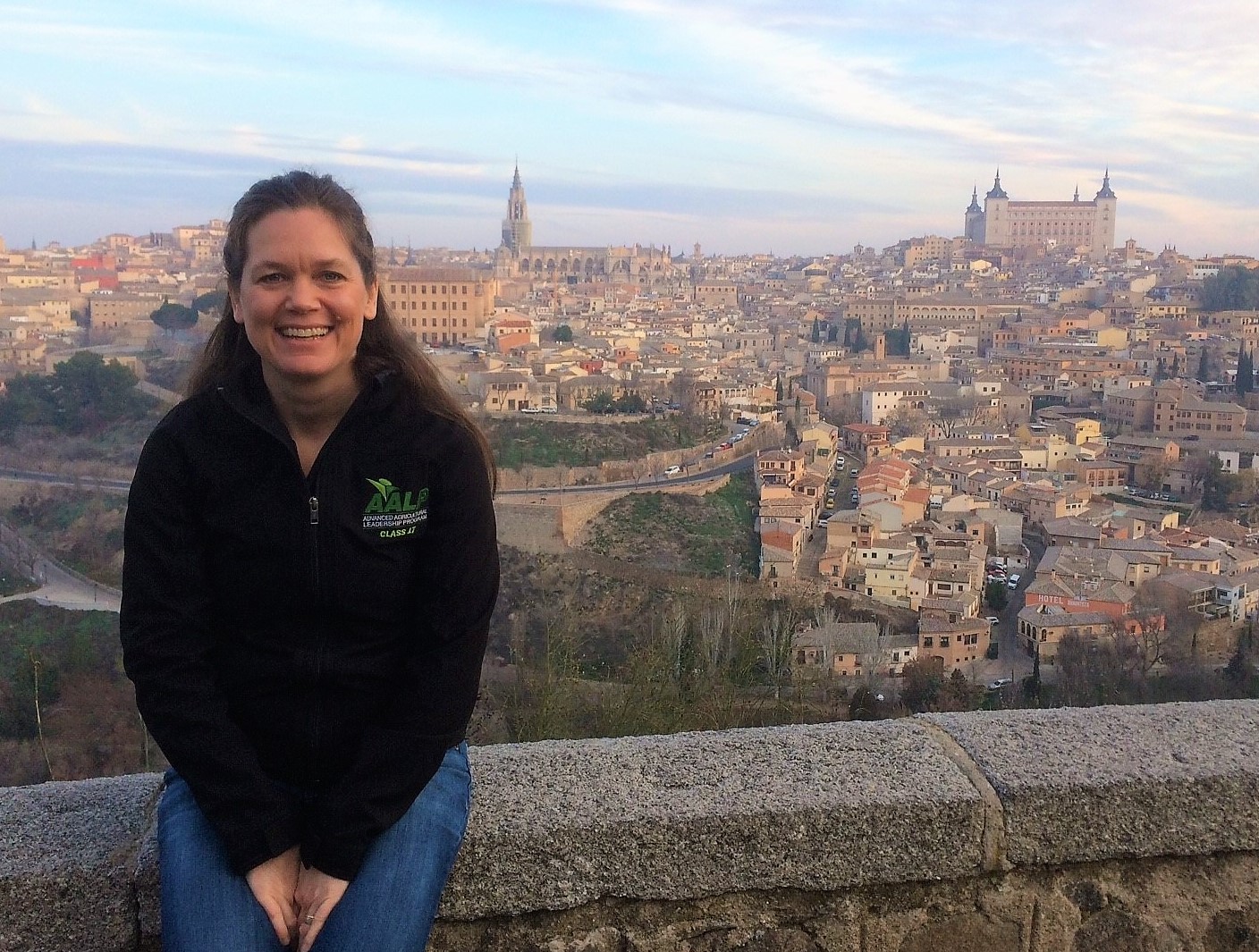I started 2020 by doing something I never thought I would do: travelling to Spain to learn about agriculture and rural communities. This once-in-a-lifetime learning experience from January 7-18 was a part of the Advanced Agriculture Leadership Program (AALP), offered by the Rural Ontario Institute. AALP is an executive professional development program for those working in careers related to agriculture, food and rural communities.
Our trip began in Madrid, then did a circle around the southern half of the country, hitting eight major cities and several smaller communities along the way. The history, culture, music and architecture were fascinating parts of the trip, but for today, I want to focus on the agriculture.
For a first-timer, coming from Canada in January to southern Spain, the jolts-per-minute were coming fast and furious. Here are a few takeaways from the trip:

Better together: Cooperatives are a common business model in Spanish agriculture, including primary production, packing and distribution, as well as vertically integrated production and processing. We toured many cooperatives in a wide variety of sectors: dairy production and processing, beef production and greenhouse horticulture. Some of these cooperatives had thousands of farmer members and long traditions. When asked about why they chose a cooperative model, most farmers responded with a version of “we are better together”. Where cooperation seemed more difficult was in working with the independent butchers throughout the country. Cedecarne is an organization working to represent these diverse, fiercely independent businesses, who lose market share to supermarkets each year. In representing 25,00 independent butchers, providing value to members is a moving target.

Built on traditions: A common response of North Americans who travel to Europe is to be struck by the commitment to traditional foods, produced as they have been for centuries. In the context of a specific ecosystem, the food traditions and associated culture and ways of life grew up around them and survive to this day. This is embodied by the Protected Designation of Origin, a system in the European Union of committing to consumers that a product is produced according to agreed-upon traditional methods, and to protect the name of that product from being used in other contexts.

We were able to experience this in visiting an Iberian Ham farm and processing The breed, housing, feed, and every step of the meat slaughter and processing is carefully controlled and inspected to earn the denomination seal on the product. It takes about 5 years from the time an Iberian piglet is born to the time when it is served on a plate as Iberian ham. Three of those years are aging of the meat. The end product is thinly sliced and incredibly flavourful. This was something that we had to enjoy in Spain, and not bring back with us. There are limited opportunities to access a similar product in Canada. Even in a globalized world, some of these traditions really are specific to a place.
Spanish farmers are facing impacts of climate change on their front doors. In the south of Spain, in the Andalucia region, producers benefit from certain microclimates which enable them to grow a rare diversity of horticultural crops and tree fruits. These include avocado, kumquat, custard-apple, mango, guava, and starfruit. Nearby, a monolithic greenhouse horticulture industry produces berries, cucumbers, tomatoes and peppers. However, temperatures well above recorded averages have been common in recent years, and drought is an ongoing threat to fruit trees and greenhouse production. Climate change can also threaten traditional systems of agriculture. The acorns that must be fed to the Iberian pigs to create the traditional ham suffer reduced yields in times of drought. These concerns were top of mind for many Spanish farmers we met.
Spain and Canada don’t traditionally see one another as major trading partners, but there are ample opportunities for connection. Many of the farmers we visited listed other countries as their major markets: Turkey, Lebanon, countries in Northern Africa and the rest of Europe. However, a visit to the Canadian Embassy and Trade Commission (CETA) in Madrid showed the potential for strengthening these links between Canada and Spain. Since CETA entered into force in 2017, bilateral trade between Canada and Spain increased by double digits for both countries, and now sits at about $9 billion per year. The Trade Commissioner plays a critical role in providing free services to Canadian businesses interested in exporting to Spain, as well as supporting Canadian research and development that may have applications in Spain.
I haven’t touched on olive oil, grain growing, or fish processing. I haven’t touched on paella, sherry, or pork cheeks. I haven’t touched on the late lunches, olive oil with every meal, or the Spanish preference for wine over water. In a future blog post, I hope to have a chance to tell you about all of that as well. For now, let me just warn you: don’t try to get coffee in a take-out cup in Spain. Take a few minutes, sit, and enjoy it




Leave a Reply